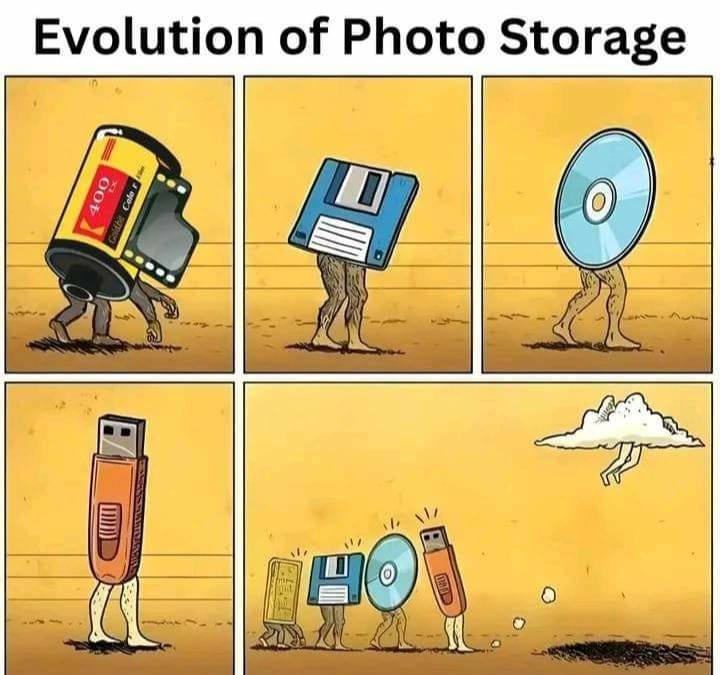Photography, an art form cherished for its ability to capture and preserve moments, has seen remarkable transformations in how images are stored and accessed. From the early days of film rolls to the modern era of cloud storage, the journey of photo storage reflects the technological advancements and changing needs of society. This article explores this evolution, highlighting the milestones that have shaped the way we preserve our precious memories.
The Era of Film Rolls
The journey of photo storage began with the invention of film rolls in the late 19th century. George Eastman, the founder of Kodak, introduced the first flexible film roll in 1888, revolutionizing photography. These film rolls allowed photographers to take multiple shots without needing to reload the camera after each exposure. The captured images were then developed in darkrooms, a process that involved chemical treatments to produce physical photographs.
While film rolls offered a significant improvement over earlier photographic techniques, they came with limitations. Storing film negatives and prints required physical space and careful handling to prevent damage. Additionally, sharing photos with others meant creating duplicates, which could be costly and time-consuming.
The Rise of Digital Photography
The late 20th century marked a significant shift with the advent of digital photography. Digital cameras, which emerged in the 1980s and became mainstream in the 1990s, replaced film rolls with electronic sensors that captured images as digital data. This transition eliminated the need for film and darkroom development, allowing photographers to instantly view and delete unwanted shots.
Digital storage mediums, such as floppy disks, CDs, DVDs, and memory cards, became popular for saving these digital images. These devices offered greater storage capacity and convenience compared to film. Photographers could now store thousands of images on a single memory card and transfer them to computers for editing and sharing.
The Advent of Cloud Storage
The early 2000s ushered in the era of cloud storage, a revolutionary leap in how photos are stored and accessed. Cloud storage leverages internet-based servers to store data, allowing users to save and retrieve their photos from anywhere with an internet connection. This shift addressed many of the limitations of physical and digital storage mediums.
Cloud storage services, such as Google Photos, Apple iCloud, Dropbox, and Amazon Photos, offer vast storage capacities and advanced features like automatic backups, synchronization across devices, and easy sharing options. These services also provide enhanced security measures, protecting photos from loss due to hardware failure or physical damage.
Advantages of Cloud Storage
- Accessibility: One of the most significant benefits of cloud storage is the ability to access photos from any device, anywhere in the world. This convenience ensures that memories are always within reach, whether on a smartphone, tablet, or computer.
- Scalability: Cloud storage offers virtually unlimited storage capacity, allowing users to expand their storage needs as their photo collections grow. This scalability eliminates the need for physical storage devices and the risk of running out of space.
- Security: Cloud storage providers employ robust security measures, including encryption and redundant backups, to protect photos from data breaches and accidental loss. This level of security is often superior to what individual users can achieve with personal storage devices.
- Collaboration and Sharing: Cloud storage simplifies sharing photos with family and friends. Users can create shared albums, grant access permissions, and collaborate on photo projects without the need for physical copies or complex transfers.
The Future of Photo Storage
As technology continues to advance, the future of photo storage is likely to see further innovations. Artificial intelligence (AI) and machine learning are already being integrated into cloud storage services to enhance photo organization, searchability, and editing capabilities. These technologies can automatically tag photos, recognize faces, and even suggest creative edits.
Moreover, emerging technologies like blockchain may offer new ways to secure and authenticate digital photos, ensuring their integrity and provenance. As internet speeds and connectivity improve globally, cloud storage will become even more accessible, making it the primary choice for storing and managing photos.
Conclusion
The evolution of photo storage from film rolls to cloud storage is a testament to the remarkable progress in technology and society’s growing desire for convenience, accessibility, and security. While film rolls laid the foundation for capturing memories, digital photography and cloud storage have transformed how we store, share, and cherish those moments. As we look to the future, it’s exciting to imagine the possibilities that lie ahead, ensuring that our memories are preserved and accessible for generations to come.
